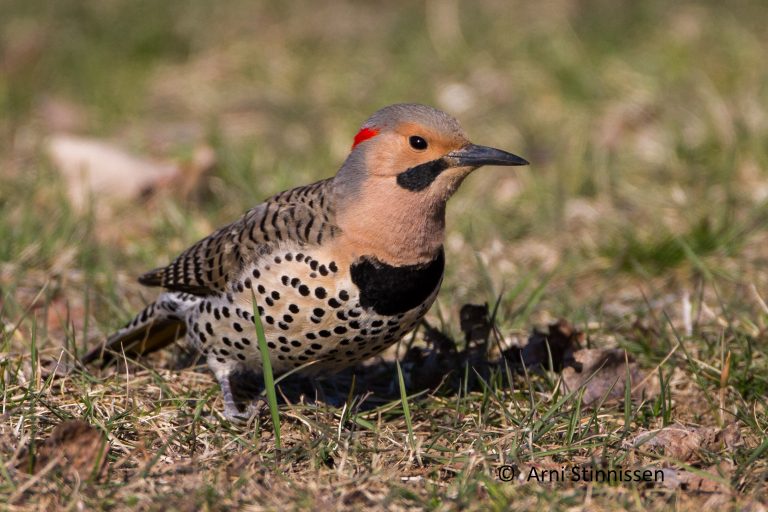We are blessed by Woodpeckers!
Worldwide, there are 210 different species, but in Ontario we only have 9 of them. All but one, the American Three-toed woodpecker, a bird of the far northern forests can be found in our part of the Province. And all but one of those nine spend most of their time in trees drilling holes or larger cavities in search of their favourite food of insects and larvae. The other spends most of its time foraging for food on the ground, and it is the only species of the 9 found here that doesn’t look like the others. It is not primarily black and white with red and or yellow highlights to its plumage. It is primarily a brown and black bird, with tinges of yellow and red! The Northern Flicker. To be more precise, the Yellow Shafted northern Flicker.
The male birds sport a rather dapper looking moustache (the malar) which extends under the eye towards the back of the head from the bill. This and his beautiful posture give him a very distinguished look. And he makes sure everyone knows about it, especially in the spring when he breaks forth into long and loud ” kee….kee….kee” calls and drumming just about anything that will make a loud sound with his bill; eaves troughs and stainless steel chimneys being favourite instruments! We have a male bird on our property that takes great delight in waking us in the morning as he hammers on our cedar siding! All of this to draw the attention of a female. I guess we can all relate to that behaviour!
Flicker’s favourite food is ants and they hop across the lawn or meadow searching for ant hills. When found, the flicker digs into the nest with its long, pointed tongue which has little hooks on the end, to aid in retrieving ants and any eggs from the colony. Rotting stumps and trees make for good sources of ants too and frequently Flickers are to be found on them digging for food. They will also eat berries and seeds.
“The only species of the 9 found here that doesn’t look like the others. It is not primarily black and white with red and or yellow highlights to its plumage. It is primarily a brown and black bird, with tinges of yellow and red! The Northern Flicker.”
Unlike its other family members, Flickers are not great wood excavators, so they search out deciduous trees with significant rot in which to build their nests, or take up residence in another woodpecker-made cavity. Nests entrance holes are about 3 inches (7-10cm) in diameter and it is about 10 inches (33-34 cm) deep. Wood chips form the nest into which the female will lay 5-8 pure white eggs. Both parents incubate the eggs for about 12 days. Likewise, both parents will feed the young, regurgitating food brought back to the nest. The young will fledge at about three weeks of age and proceed to follow the parents around on the ground begging for food.
Unlike most of our woodpeckers, Flickers migrate, spending the winter months only as far south as they have to go in order to find food!
To check out some properties where you may find Northern Flickers click here!
David A. Homer is a volunteer and on the Board of Directors at The Couchiching Conservancy, a non-profit land trust dedicated to protect nature for future generations (including Northern FLickers).

